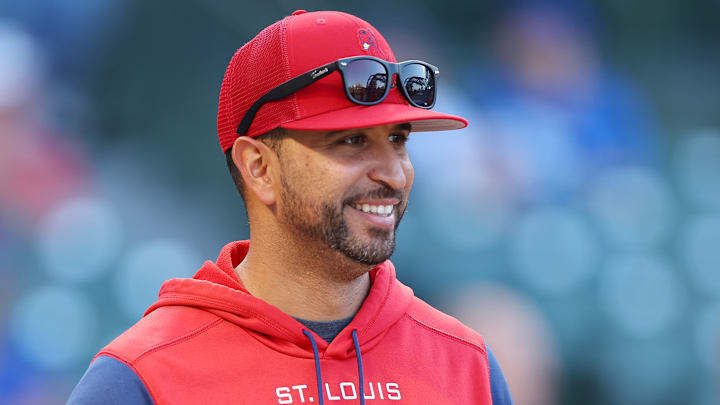Willson Contreras, C
Best-case scenario: Strong complement to Goldschmidt and Arenado
Willson Contreras is likely to hit fifth in most games and provide a bat the Cardinals haven’t seen behind the plate since Yadier Molina’s prime seasons. While it likely won’t reach the days of Albert Pujols/Scott Rolen/Jim Edmonds in the batting order, Contreras, Paul Goldschmidt, and Nolan Arenado could still be a dangerous trio. Contreras could feasibly reach 25 home runs and drive in a lot of runners behind those mashers.
Worst-case scenario: Catching duties hurt offensive output
While Contreras will often be the Cardinals’ designated hitter when he isn’t catching, the team's lack of an adequate backup catcher could force him to squat behind the plate more often than he did with the Chicago Cubs last year, where he only started 72 games at catcher. If he has to concentrate on catching that much, it could damage his offensive production, as most catchers are notoriously feeble at the plate.
Paul DeJong, SS
Best-case scenario: Holds on to bench spot
Paul DeJong has been a massive disappointment the past few seasons, and he didn’t receive much playing time during Spring Training because of an injury. He reworked his swing over the offseason, and if it shows results when he returns from injury, he could make it as a reserve shortstop. It’s not realistic to expect him to unseat Tommy Edman as the starting shortstop, but with a diminished role, a small rebound would make him a passable bit player.
Worst-case scenario: Released
The Cardinals might need to cut their losses with DeJong and eat the rest of his contract if he falls into another slump to start the season when he comes back. DeJong could possibly use a change of scenery more than anyone, and there’s a chance that Taylor Motter will retain the role even when DeJong is healthy, leaving no place for DeJong on the roster.
Brendan Donovan, UTIL
Best-case scenario: Borderline All-Star
Brendan Donovan is the Cardinals’ prime leadoff candidate. He consistently reached base last season, holding a .395 on-base percentage. He rarely struck out and showed a strong eye, drawing 60 walks and whiffing 70 times. This spring, Donovan displayed power that hadn’t been seen before, hitting four home runs. If that translates to the regular season, he will have a dangerous new aspect to his game. Donovan likely isn’t yet known around the league enough to make an All-Star team, but it could be in his future.
Worst-case scenario: Walks less and power dries up
If pitchers approach Donovan more aggressively than they did last year, he likely won’t sustain his high on-base percentage. Additionally, if his power in spring shows itself to be an aberration, pitchers will have even more reason to be aggressive because they know the threat of more than a single is minimal. If this occurs, Donovan will likely lose his leadoff spot and bat toward the bottom of the order.
